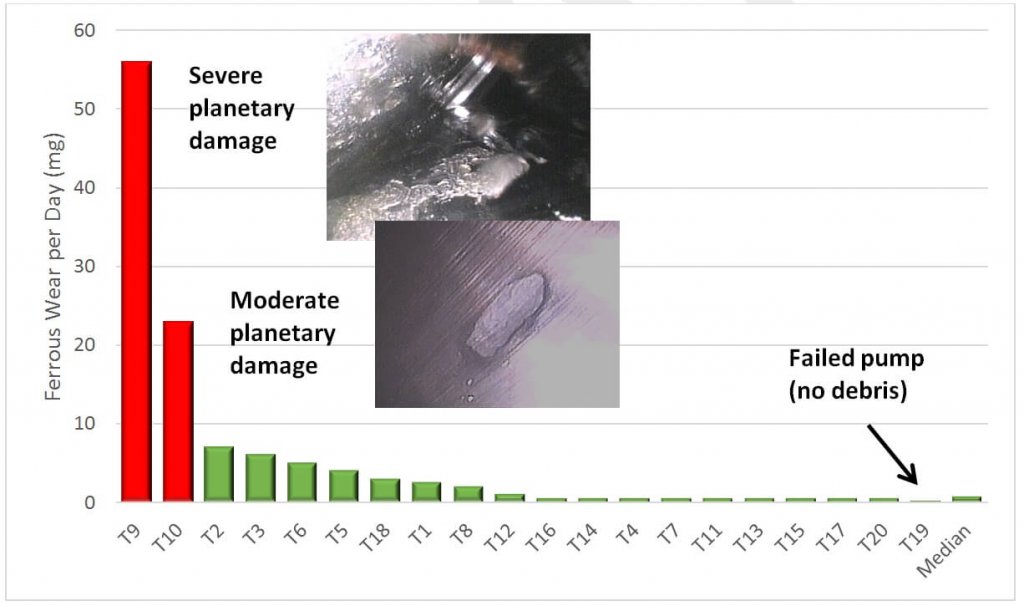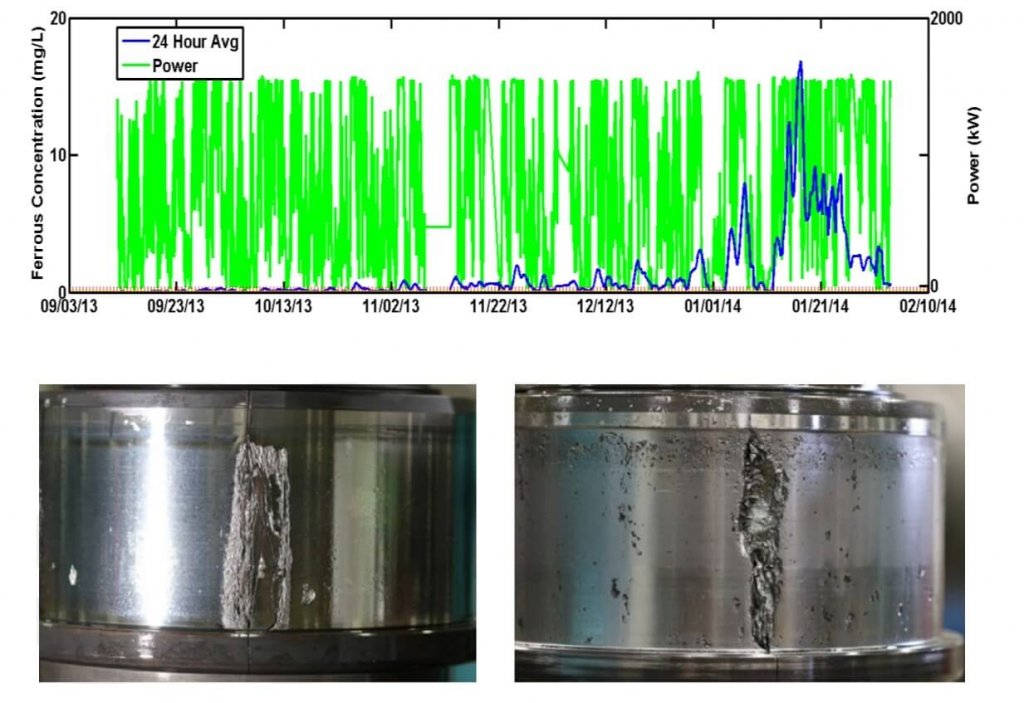Ryan Brewer, Vice President of Engineering, Poseidon Systems
An asset health monitoring strategy is only as good as the tools employed. Unfortunately, while tools such as vibration monitoring, borescope inspections, and offline oil analysis all provide valuable information, they still have significant misdetection rates which could be addressed through a simple, cost-effective tool – metallic debris monitoring.
Metallic debris monitoring

The Poseidon metallic debris monitor works by using a series of inductive coils to establishing a magnetic field within the sensor bore. Metallic particles passing through the bore cause a measurable disturbance in the field proportional to particle size. Particle type is determined based on the measured ratio of resistance change versus inductance change.
A metallic wear debris monitor detects the presence of ferrous and nonferrous particles present in the gearbox lubricant. By counting and sizing each particle that passes through the sensor, the technology can detect a faulty gearbox component and assess the fault severity. Adoption rates for the technology are increasing because it provides an early warning of faults missed through routine maintenance, borescope inspections, and vibration monitoring. The reason metallic debris monitoring is so effective is that it provides a direct measurement of the damage by detecting the metal particles produced as fault forms and propagates.
Poseidon Systems’ wear debris monitoring products have been designed for the wind industry. To address its needs, the Trident DM series features best-in-class detection sensitivity, a sub-30 minute installation, and flexible installation, communications, and data-analysis options. The high sensitivity of the device and information rich data set provides significant benefit over competing technologies enabling the earliest possible warning of fault initiation and more refined severity assessments.
Site health assessment
Poseidon’s Site Health Assessment is a low-cost option for operators to deploy debris monitors across a site for a limited duration and receive a detailed assessment of gearbox health. For well less than $100/turbine/month, Poseidon provides all sensor and communication hardware, an online data portal, reporting and consultation services. After deployment, real-time alerts are generated to notify the site of issues along with monthly reports from Poseidon engineering. These reports let the operator focus subsequent inspection and maintenance activities on problem turbines, and eliminate unnecessary climbs and borescope costs.

The elevated wear levels detected on Turbine 9 and 10 indicate the presence of a significant fault. Conversely, Turbine 19 is running but generating no debris, indicating a failed bypass filtration system. This information lets O&M crews focus their time and effort on turbines that need them most.
In this site health assessment example, after one month of monitoring, three turbines were identified as problematic. Inspections revealed two turbines with significant bearing damage in the planetary stage and one turbine with a failed bypass filtration system. The resulting warranty claims stemming from these detections generated over $400,000 in cost savings for the site.
Best use: long-term deployment
The Site Health Assessment provides a snapshot of gearbox health and can detect faults that may be missed by other monitoring and inspection methods, but the best use of wear-debris monitors is long-term deployment. By using wear-debris monitors across a turbines entire life, operators can detect faults in their earliest stages and reduce secondary damage.
Wear generation is not a steady, predictable process. It occurs in bursts, often associated with start-up and shutdown events. For this reason, it is highly unlikely that an offline oil analysis will provide any meaningful correlation with gearbox health. However, long-term, online monitoring lets an operator observe the cumulative effect of these wear events. By observing all summing, such as that in the accompanying bar chart, the effect of these events over time, the operator can obtain an estimate of the fault size to guide inspections and maintenance.
Planetary fault detection
Fault detection in the planetary section is particularly challenging for vibration monitoring systems due to its complex structure and its slow, varying speeds. Borescope inspections are susceptible to missed detections because of the large number of components and tight clearances. In contrast, metallic-debris sensors excel in providing planetary fault coverage.

The accelerating wear generation rate in mg/L (blue) of a failing turbine is shown against the turbine’s power output (green). The photos, bearing races from the gearbox, show the extent of the damage is consistent with the wear rates detected by the Poseidon sensor.
The example above shows the last six months of metallic debris data on a turbine that eventually was taken out of service. Because a fault location could not be identified, the operator elected to use data from the wear-debris monitor to maximize the life of the gearbox prior to eventual replacement. A tear-down inspection revealed axial through-cracks on two of the three upwind planet bearings along with significant material loss. Neither borescope inspections nor offline oil analysis detected this fault, but metallic wear debris monitoring provided nearly a year and a half’s notice.
The term “condition monitoring system” often refers to a vibration-based system. However, the metallic-debris monitor described here has a proven, cost-effective gearbox monitor for the wind industry.
Filed Under: News




